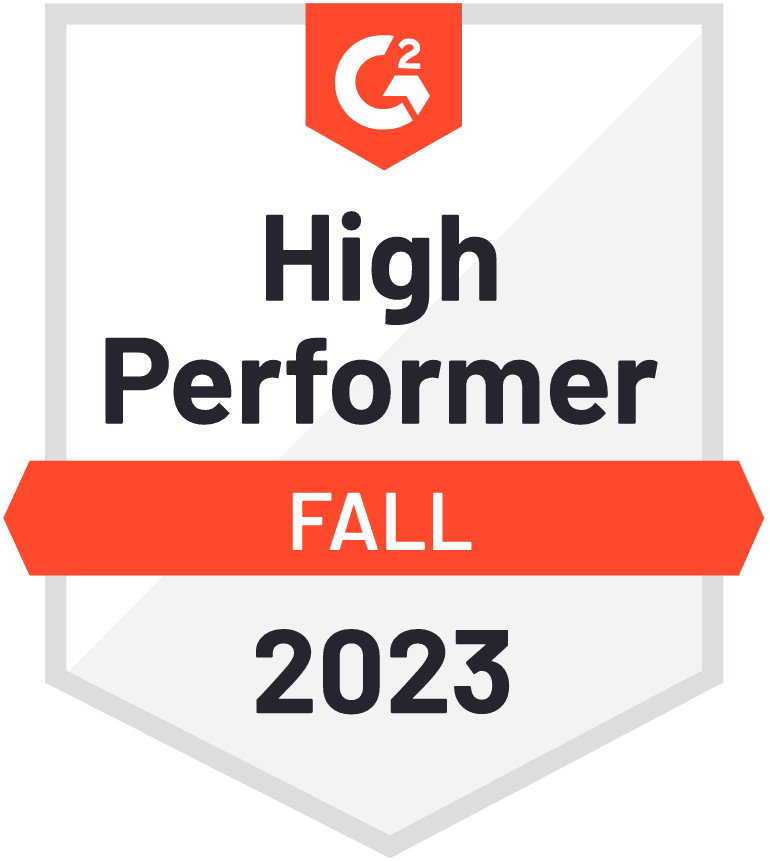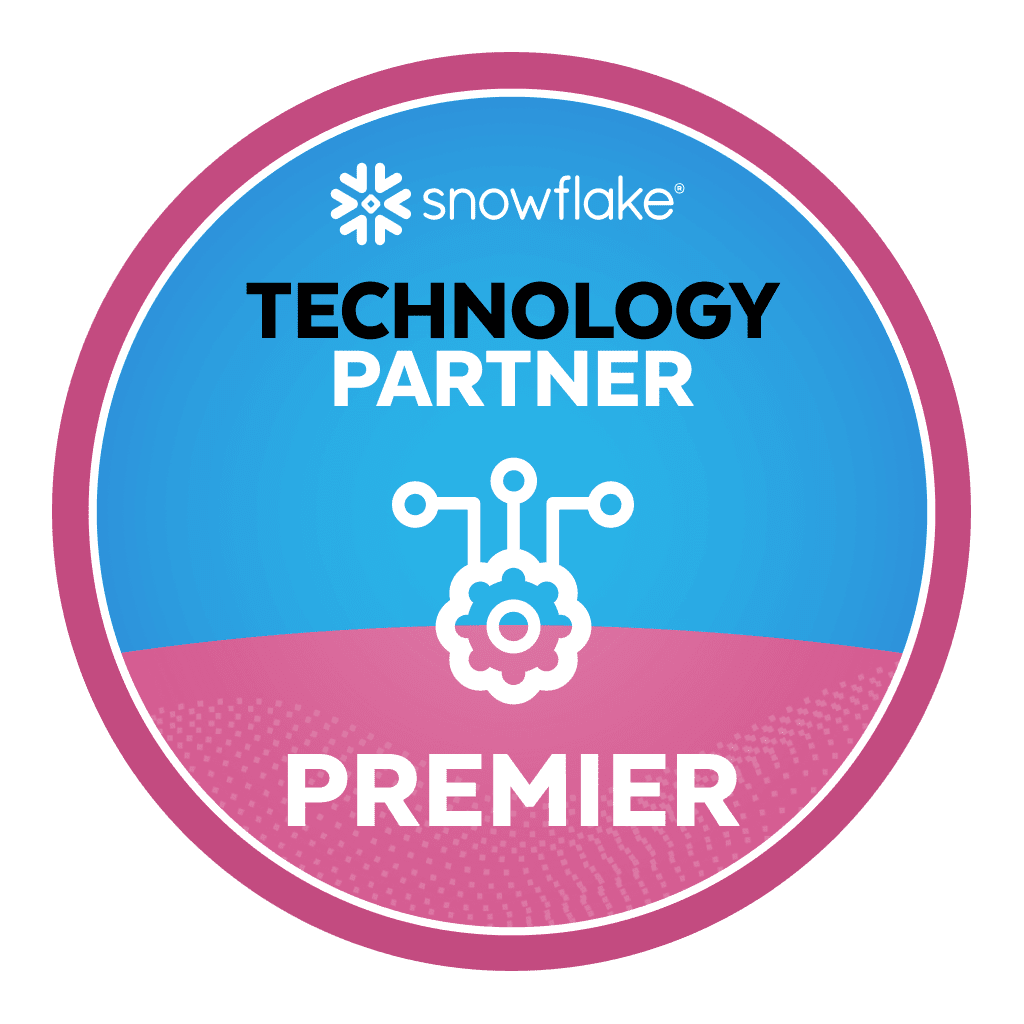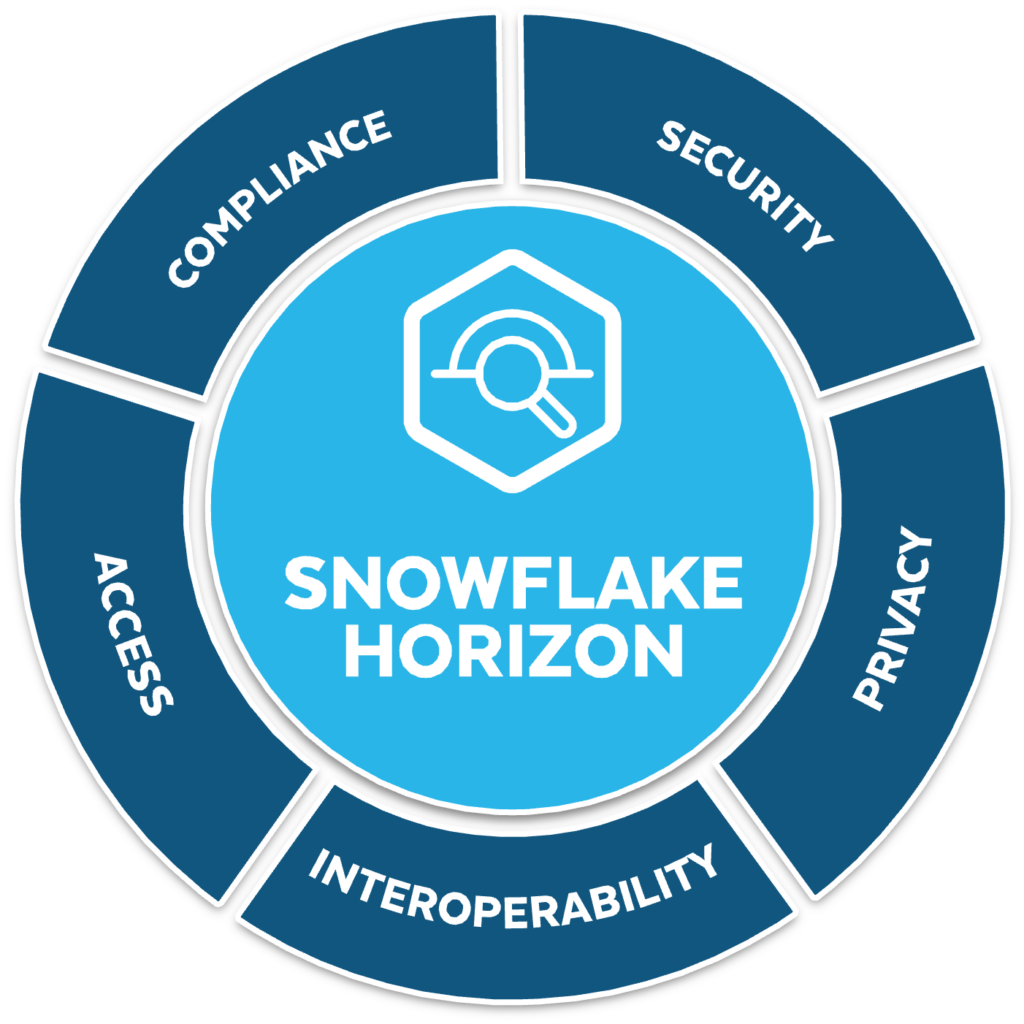The Data Security Platform for Technology Companies
Tech professionals like you use data to win. You face a dilemma, using customer data without proper controls is a security and compliance risk; but security controls slow you down and reduce productivity.
With Satori’s data security platform, you have the ability to meet security and compliance requirements, such as SOC2, while actually improving your company’s data productivity.
Case Study
Learn how Innovaccer is using Satori to enable audited and governed access to production and analytics data across a broad variety of technologies.

Auditing, Monitoring & Reporting
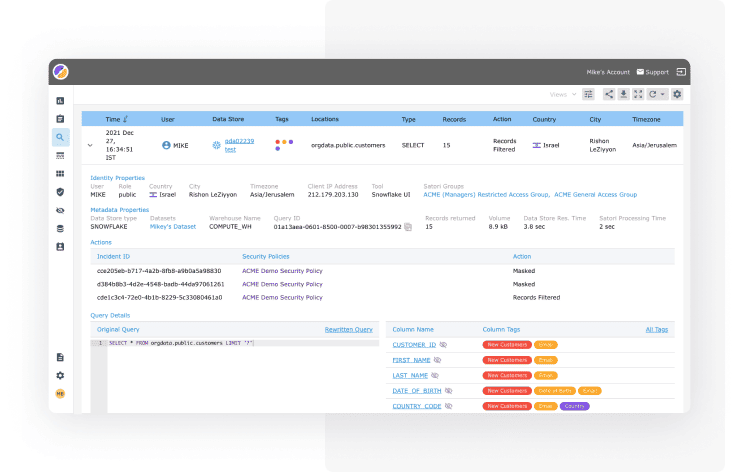
Keeping logs for access to customer data, as well as other sensitive data across your databases, data warehouses or data lakes is challenging. Making actual use of the logs is even harder. With Satori, tech companies get a single platform where you can view and analyze all data access across all your platforms.
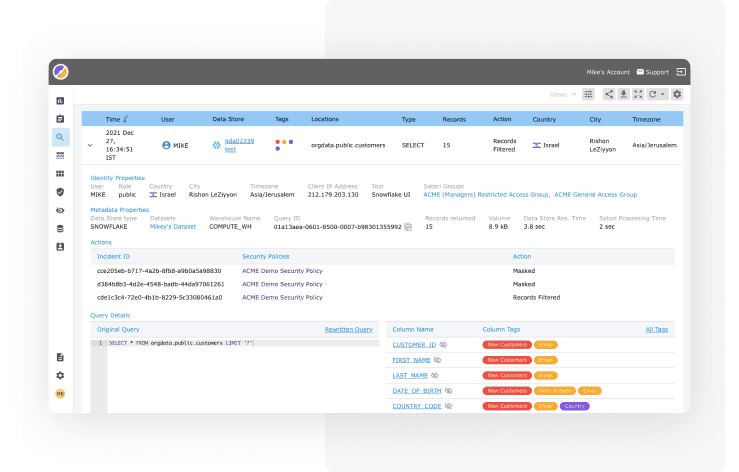
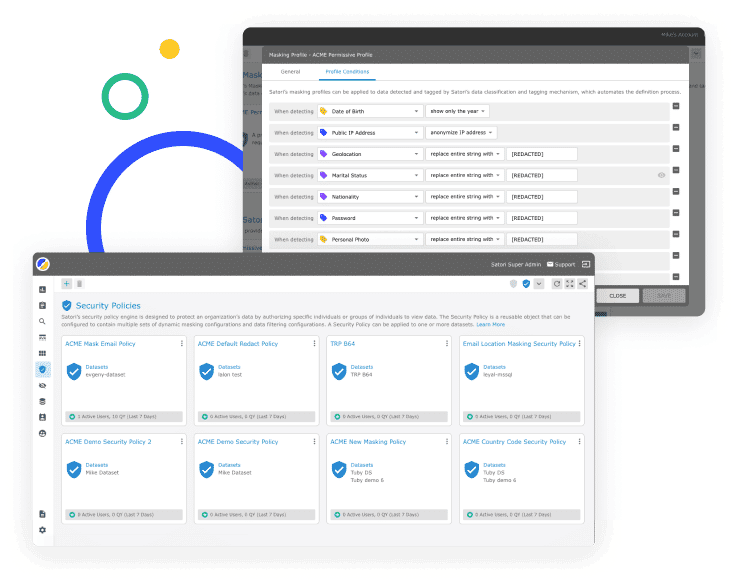
Access Control and Security Policies

Instead of applying access control and security policies manually in a myriad of databases, data warehouses or data lakes, you can set them from a single platform, in a fraction of the time. This allows you to better and faster secure your sensitive data. Also, security teams can set the policies, without making any changes to the data stores.
Self-Service Data Access
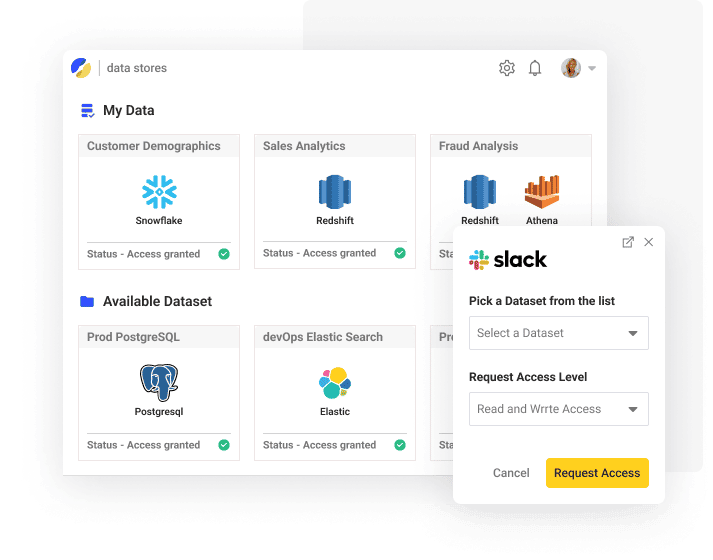
When many teams are accessing data, managing access to data can easily take 25% of data admins time. Satori’s self-service data access portal (with integrations to tools such as Slack, Jira, and more) your data consumers can access to datasets according to your approval policies.

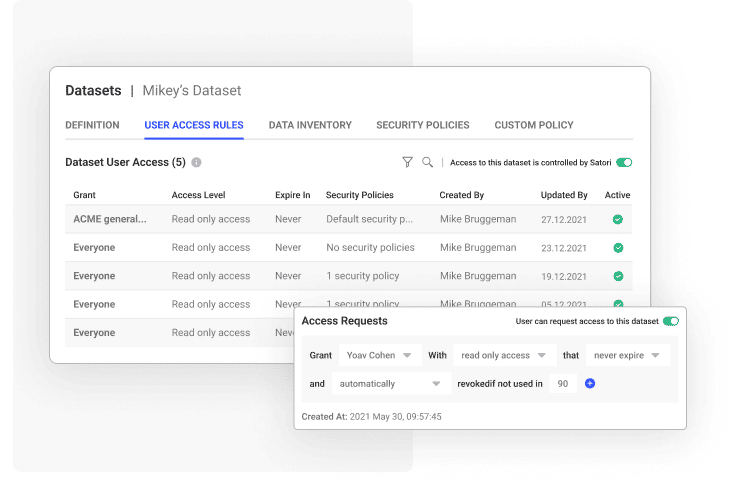
Just-In-Time Data Access

In many cases, users, such as analysts and engineers, have more permissions to data than needed. The reason is that in many cases permissions are given perpetually, as managing them is not scalable. With Satori, you can enable your users to get just-in-time access to data in a simple way. This way you’re preventing risks due to over-privileges, as well as streamlining data productivity.
Case Study
Learn how Innovaccer is using Satori to enable audited and governed access to production and analytics data across a broad variety of technologies.


“You need to make secure data the fastest way of getting things done and that’s what we do with Satori.”

Dr. Diederik Van Liere
VP Data Science and Engineering, Wealthsimple
“We have built a custom ACL (Access-Control List) engine with Satori, that maps to the organizational hierarchy of our customers That’s what makes our healthcare data platform so specialized for this market. You can easily take that hierarchy and put ACL structures in place to say, as you go higher up in the structure, you get broader access, but you can still limit the access for each level: that’s where data masking, data access policies, and data auditing capabilities of Satori are extremely important.”
Arun Buduri
VP of Engineering, IT and CISO, Innovaccer

“We have all of the data regimes that require the controls that must be implemented for GDPR or region-specific requirements like those for Australia, Brazil, or the US.”
“Being able to have an effective line of sight on which data resides where, how internal stakeholders are consuming that data, and what they need to be successful within their role without increasing the risk of data breach or exposure for their organization – that’s the “why” for DataSecOps and Satori.”

Chaim Mazal
SVP of Technology and CISO, Kandji
Satori for Tech Companies

Satori is a data security platform for tech companies such as B2B platforms and other companies storing sensitive data. With Satori you get the visibility required for security and compliance requirements (such as SOC2), as well as, place controls on access to analytics and production data on databases, data warehouses or data lakes.
Satori also enables you to make data more accessible to your data consumers. Your users get access to data using a data portal, or integrations with other tools.
Key Use-Cases:
- Meeting Compliance Requirements
- Data Infrastructure Transformation
- Data Democratization and Data Sharing





